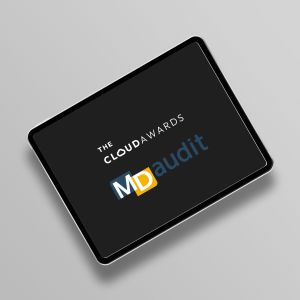Healthcare organizations and their revenue cycles are under extreme pressure on multiple fronts. The financial blow from COVID-19 will continue to be felt for years to come. At the same time, the focus on cost controls and the ongoing transition to value-based care has lowered the top line and further squeezed profit margins.
In tandem with those challenges, healthcare organizations face mounting compliance concerns related not only to new COVID-19 guidance and telehealth, but also the introduction of new Evaluation and Management (E&M) codes. It all contributes to an environment characterized by ramped-up scrutiny from government and private payers – an environment that requires hyper-vigilance to maintain compliance.
For forward-thinking organizations, the solution is to marry billing compliance and revenue cycle teams under a single revenue integrity umbrella. It’s a holistic approach that breaks down silos within the organization and leverages their combined expertise to manage financial risks and create a stronger, more resilient organization.
A strong revenue integrity program brings together these two seemingly incompatible groups whose interests overlap far more than it may first appear. It is an “unexpected marriage” that aligns organizational resources to pursue common goals such as a more robust revenue stream, decreased compliance risk, and enhanced bottom line performance.
Navigating Change Together
The financial fallout from the pandemic is just one wave of change that is putting healthcare organizations’ financial well-being in jeopardy. Shifting reimbursement models and new legislation have created an onslaught of mandates, and greater oversight from the OIG, CMS and other regulatory agencies are coalescing to undermine hospitals and physician practices that don’t have the resources to adapt.
Regulators had already intensified and enlarged their auditing roadmap before COVID-19 entered the U.S. In late 2019, HHS’s Office of the Inspector General (OIG) recommended that the Centers for Medicare and Medicaid Services recover $54.4 million in improper payments to acute care hospitals due to incorrectly coded claims. And, with months of COVID-19 incentive payments in the rearview mirror, most organizations expect even greater scrutiny going forward – the OIG not surprisingly has already announced its audit plans related to COVID-19 discharges.
To weather the storm, organizations must focus their limited resources on minimizing billing compliance risks to avoid financial penalties, reimbursement paybacks and tarnished reputations.
Common Risks
In nearly all cases, the data to be analyzed is the same for both compliance and revenue cycle. By combining both teams’ efforts under a revenue integrity initiative, organizations have a better chance of detecting these issues and resolving them much more quickly.
Further, it has become clear that billing compliance and revenue cycle oversight are two sides of the risk equation.
Compliance and revenue cycle risks – such as missed charges, over- or under-reported units, duplicate claims, and over- or under-coding – are issues both groups must minimize. Combining forces to address them not only ensures better outcomes, but it also reduces the cost of auditing and risk management.
Limitations of Traditional Plans
A traditional billing compliance risk assessment and audit strategy normally consists of an annual process based on a compliance work plan. The work is then reviewed regularly and adjusted based on emerging risks and regulatory changes. Sources like the OIG Workplan, PEPPER data, prior audit results, and Recovery Audit Contractor (RAC) activity help to identify potential risk areas. Random reviews of small samples are conducted to validate the level of risk in the organization.
Unfortunately, actual compliance and revenue cycle problems are often missed during these traditional periodic reviews. Reporting, documentation, and claims errors from providers who are scheduled for annual audits could go undetected for months until their next scheduled assessment. The result is lack of true insight into the underlying root cause of compliance and revenue cycle risks.
A key factor in effective risk management is prioritizing efforts on where the real problems exist, rather than relying on periodic audits that may or may not identify risk.
It’s important to quickly identify issues that are putting your organization at risk so you can initiate corrective action to eliminate them. However, implementing corrective action is only the first step. It’s also essential to validate and verify that the process improvements put in place to mitigate those risks are providing the desired results. This closed-loop process is critical to managing common risk areas for both billing compliance and revenue cycle teams.
Leveraging Analytics to Manage Risk
To achieve their revenue integrity goals, organizations need advanced analytics tools that allow both billing compliance and revenue cycle teams to maintain high levels of accuracy and efficiency. An effective analytics solution provides a common platform that creates transparency so that both groups can efficiently diagnose issues and drive corrective action.
Leveraging analytics, particularly in the form of an advanced analytics platform such as MDaudit Enterprise, helps organizations uncover insights by making it possible to review pattern changes in billing activity to identify the underlying source of issues. It also allows both billing compliance and revenue cycle teams to review key focus areas from the OIG, analyze PEPPER reports, and better target areas that require focused attention and long-term corrective action plans.
Platforms like MDaudit help break down the silos between departments by providing a single source of billing and claims data that both teams can leverage to help meet their goals. A common, proactive approach allows organizations to make the best use of investigative resources and enhance the effectiveness of both departments.
By breaking down silos and focusing on a unified revenue integrity program, organizations can make a significant, positive impact on the overall health and financial strength of the institution. And that is the hallmark of a successful marriage.








